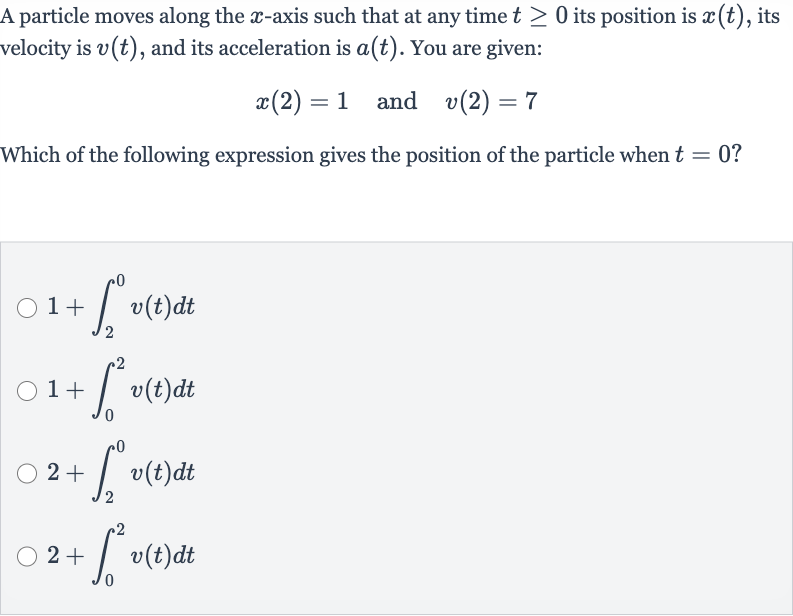Full solution
Q. A particle moves along the -axis such that at any time its position is , its velocity is , and its acceleration is . You are given:Which of the following expression gives the position of the particle when ?
- Integrate Velocity Function: To find the position of the particle at time , we need to integrate the velocity function from time to , since we know the position at and the velocity at . The integral of the velocity function will give us the change in position from to .
- Calculate Position at : We are given and . To find , we need to subtract the change in position from to from . This change in position is given by the integral of the velocity function from to , not from to . Therefore, we should use the integral with limits from to .
- Find Correct Expression: The correct expression for the position of the particle at is therefore: Since , the expression becomes:
- Choose Correct Option: The correct choice from the given options that represents this expression is: This is because the integral of velocity from to gives the change in position during this time interval, which when added to the position at , gives the position at .
- Final Answer: The correct answer is therefore the second option:
More problems from Relate position, velocity, speed, and acceleration using derivatives
QuestionGet tutor help
QuestionGet tutor help
QuestionGet tutor help
QuestionGet tutor help
QuestionGet tutor help
QuestionGet tutor help
QuestionGet tutor help
QuestionGet tutor help
QuestionGet tutor help

